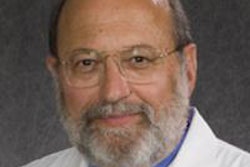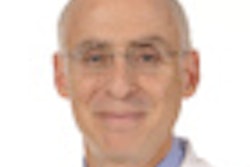
After years of increasing screening mammography use in Vermont, there was a decline that coincided with the 2009 U.S. Preventive Services Task Force (USPSTF) recommendations, according to a new study published online in Radiology. And the same trend may have occurred in other states.
Vermont's screening mammography rates are largely similar to those of other states, according to lead author Brian Sprague, PhD, of the University of Vermont. Vermont is part of the Breast Cancer Surveillance Consortium, and as such it tracks closely with other sites and states in that database, Sprague told AuntMinnie.com.
"We're not a wild card, so if our screening mammography rates have decreased, chances are other states' [rates] have as well," Sprague said.
Sparking controversy
The USPSTF sparked controversy in November 2009 when it rescinded its 2002 recommendation that women ages 40 to 49 receive regular mammography screening, saying that existing literature did not support the use of routine screening in this age group. Instead, it recommended that screening begin at age 50, and then proceed biennially.
"The task force's rationale was that its recommendation retained the benefits of screening and cut back on the harms by going to a less intensive screening regimen," Sprague said. "We want to determine if that's true."
 Brian Sprague, PhD, from the University of Vermont.
Brian Sprague, PhD, from the University of Vermont.
The most frequently cited data on screening mammography use come from women themselves or surveys. These approaches have their limitations because women may inaccurately report their screening mammography compliance. In addition, incomplete response rates in survey studies can lead to bias. The use of a registry such as that maintained by Vermont could overcome these deficiencies, Sprague said.
"The data from the Vermont Breast Cancer Surveillance System on the number of screening mammography exams conducted in the state has been gathered since 1994," he told AuntMinnie.com. "We felt we had a unique study population that could contribute solid data on the question of whether the USPSTF's recommendations were followed by changes in screening use in our state."
Using registry data, Sprague and colleagues examined trends in screening mammography use between 1997 and 2011 among 150,000 women age 40 or older (Radiology, September 26, 2013).
They found steady growth in mammography compliance up to 2009. The age-adjusted percentage of women 40 years or older who had screening mammography in a given year in Vermont increased from 34.5% in 1997 to 45.3% in 2009, Sprague and colleagues wrote. Also, the percentage of women who had received screening mammography within the past two years increased from 52.5% in 1998 to 59.6% in 2009.
Then it all went south
The direction changed after the USPSTF decision. The researchers found that after the task force's recommendation, the percentage of Vermont women age 40 years or older who were screened in the past year decreased from 45.3% in 2009 to 41.6% in 2011.
The largest decline was among women 40 to 49 years old -- although Sprague's group also noted substantial declines among women 50 to 74 years and those 75 years and older. Also, the percentage of women ages 50 to 74 years screened within the past two years decreased, from 65.4% in 2009 to 61.9% in 2011.
"The percentage of women aged 40 years and older who were screened in the past year increased at an annual percentage change of 1.8% during 1997-2009 and declined annually by 4.4% during 2009-2011," the team wrote. "The percentage of women aged 40 years and older who were screened in the past two years increased at an average annual percentage change of 0.8% during 1998-2009 and declined annually by 3.4% during 2009-2011."
No doubt about it: The use of screening mammography declined after the USPSTF's guidelines were released, Sprague said. But whether the two developments are directly linked remains unclear.
"We see the data, but we don't really know what led to the decrease in screening rates," he said. "We've looked at the economy in our state and the number of women without insurance, yet we haven't seen any dramatic changes in these factors that would explain this. But we're aware that this is a complicated issue."
The next step is to consider the characteristics of breast cancer diagnosis in Vermont, Sprague said.
"We see this decline in screening, so are we going to see poorer outcomes -- more clinically detected rather than screening-detected breast cancers?" he asked. "And who are the women who are being screened less? Are their demographics concordant with the USPSTF guidelines? How are these decisions about whether to screen or not being made?"




















